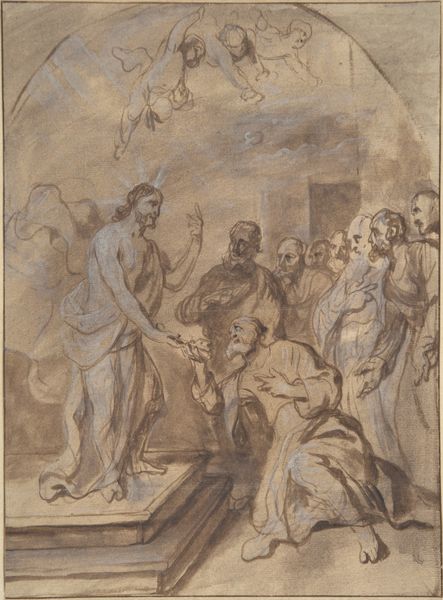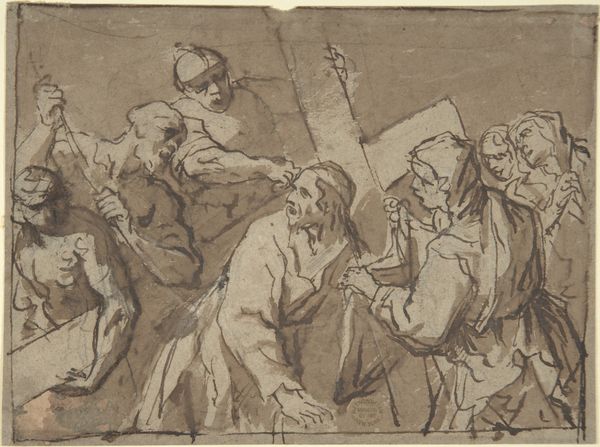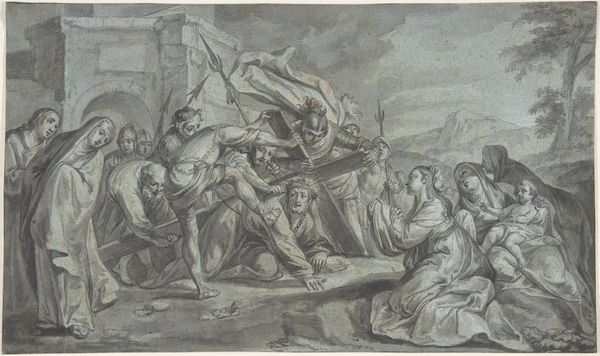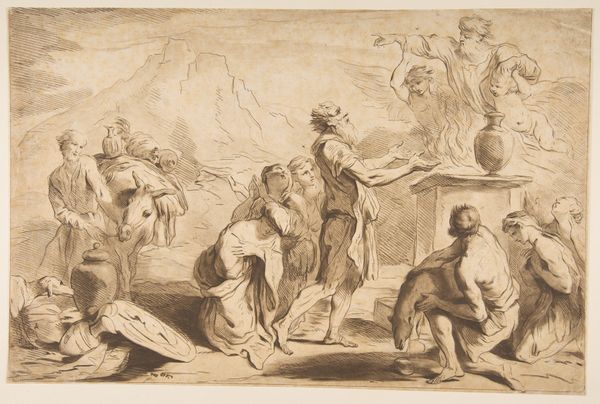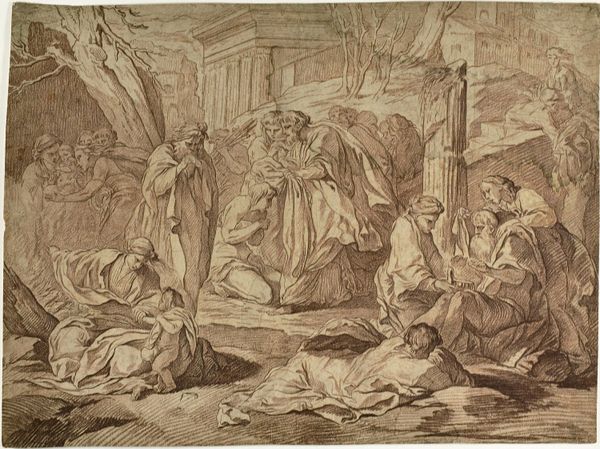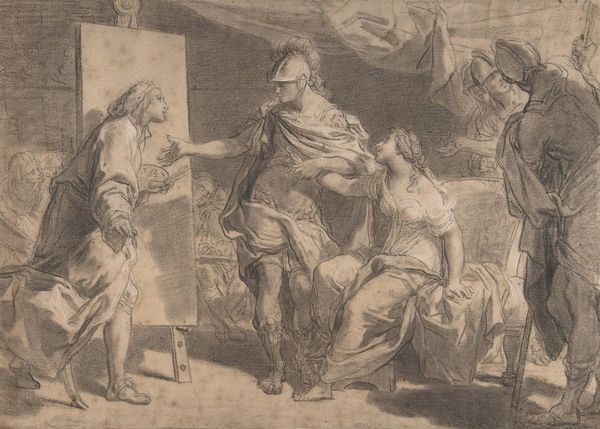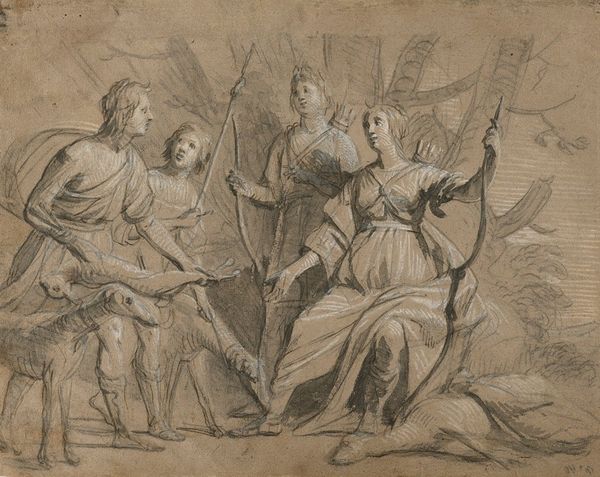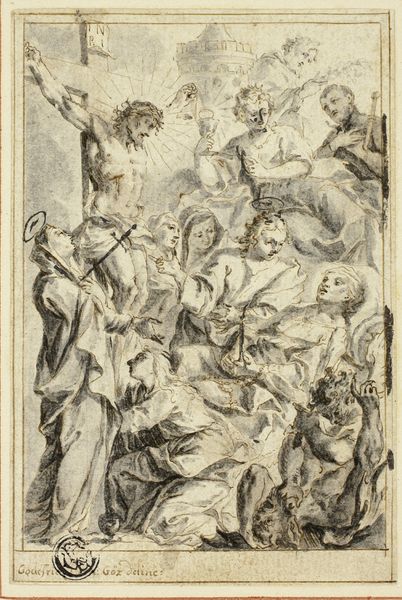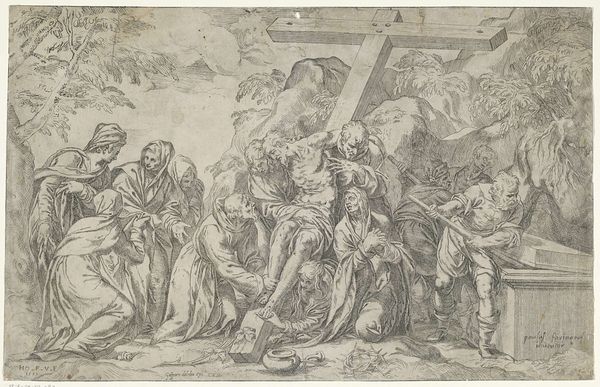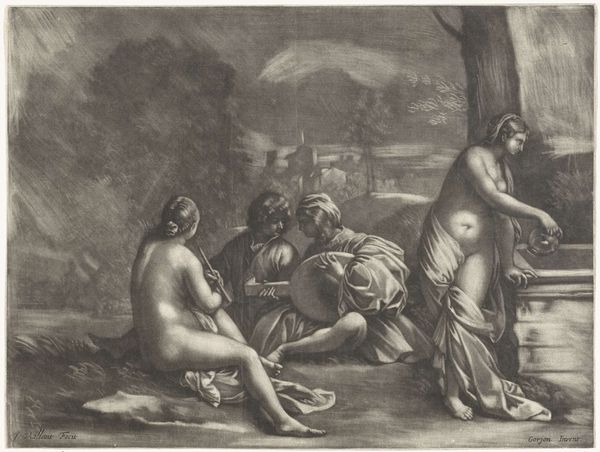
drawing
#
drawing
#
baroque
#
landscape
#
figuration
Copyright: Public Domain: Artvee
Editor: This drawing, "Diana and Four Nymphs Receiving Gifts from a Satyr," made around 1630 by Gerard van Honthorst, uses primarily gray wash. It has a somber feel to it. What are your initial thoughts on this portrayal? Curator: It's intriguing to see the depiction of Diana and her nymphs here. Van Honthorst presents a narrative steeped in classical mythology, but through a lens of power dynamics and perhaps even resistance. Notice the satyr, traditionally a symbol of unrestrained male desire, presenting gifts. This act itself implies a negotiation, a possible placation of female power. Editor: So, are you saying this drawing depicts a power struggle of sorts? Curator: Exactly. Consider the context: 17th-century Europe was a period of significant social and political upheaval. Honthorst, a Dutch Golden Age painter, was acutely aware of shifts in societal norms. Do you think the nymphs' apparent passivity might actually hint at a subtle form of agency, perhaps a calculated acceptance of the satyr's offering? What does the viewer's eye tell us about their expressions, their gestures? Editor: Now that you point that out, their body language is subtle yet strong. They possess these weapons of sorts. And the dog, that adds an extra sense of protection. I had only read the scene at face value. Curator: Precisely! These elements become points of resistance against patriarchal structures. By focusing on Diana, a strong, independent female figure from mythology, and emphasizing the agency of her nymphs, Honthorst subtly challenges the established social order. He questions the perceived dominance of male figures, as symbolized by the satyr. This subversion of expectations is something Baroque art does particularly well, isn't it? Editor: That's fascinating. I’ll definitely look at Baroque art with more questioning and less acceptance from now on! Curator: Remember that all art offers a powerful means to examine the dynamics of our society. Looking at it from the standpoint of gender or cultural critique truly brings art to life.
Comments
No comments
Be the first to comment and join the conversation on the ultimate creative platform.
